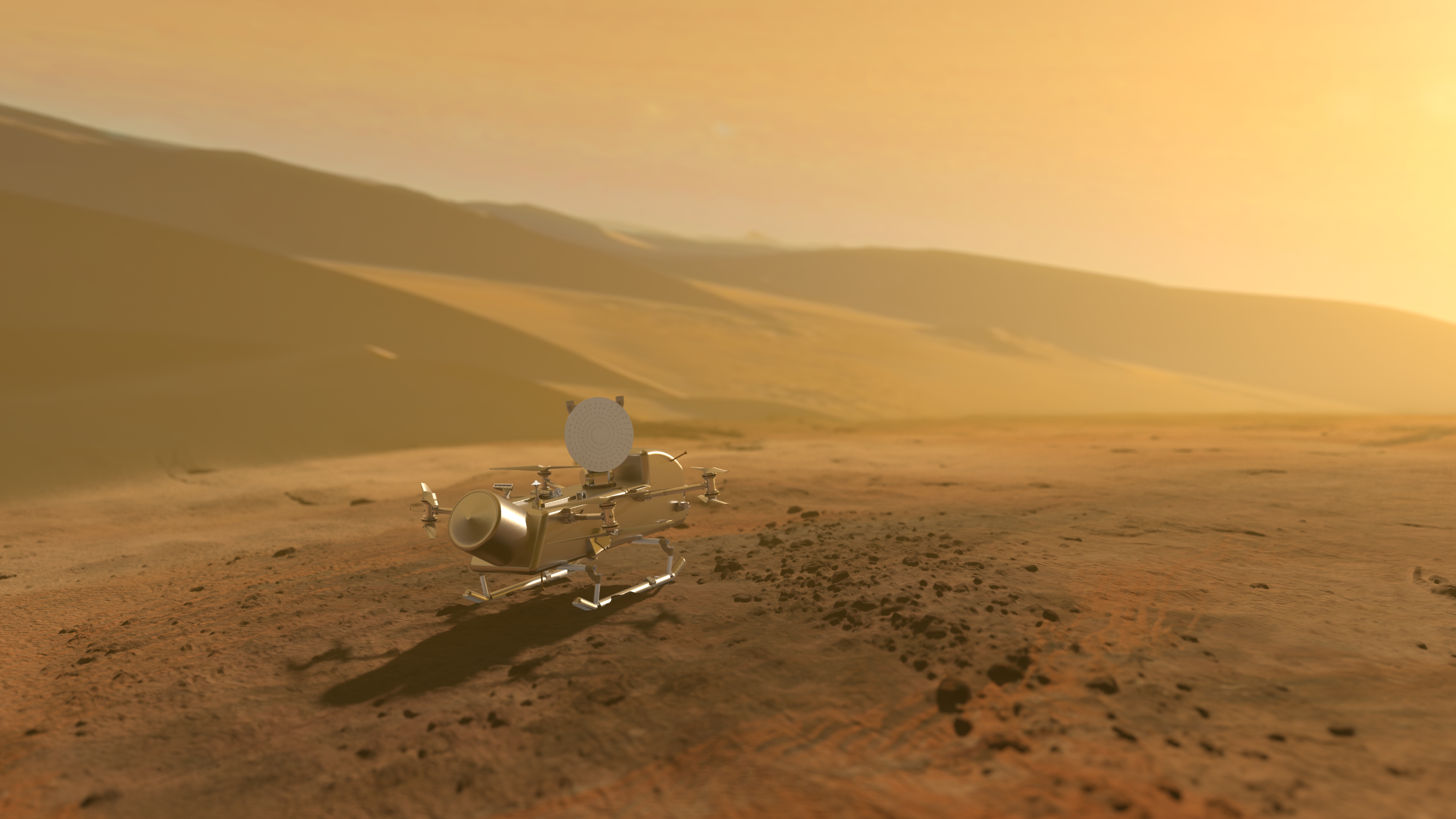5 min read
Cassini is currently orbiting Saturn with a 47.8-day period in a plane inclined 33.1 degrees from the planet's equatorial plane. The most recent spacecraft tracking and telemetry data were obtained on Dec. 10 using one of the 34-meter diameter Deep Space Network (DSN) stations in Australia. The spacecraft continues to be in an excellent state of health with all of its subsystems operating normally except for the instrument issues described at http://saturn.jpl.nasa.gov/news/significantevents/anomalies. Information on the present position of the Cassini spacecraft may be found on "Eyes on the Solar System."
While Cassini sped inbound towards its periapsis passage on Monday of this week, preparations proceeded on Earth for the Dec. 10 Titan close encounter named T-107. This unusual encounter will include three independent means to measure Titan's atmospheric density. The encounter page published today has more information: http://saturn.jpl.nasa.gov/mission/flybys/titan20141210
Wednesday, Dec. 3 (DOY 337)
The Visible and Infrared Mapping Spectrometer (VIMS) spent seven hours creating a mosaic of the sunlit rings today. As usual, the instrument digitized the data from its observation for storage aboard the spacecraft's solid-state recorder until the next downlink period.
Thursday, Dec. 4 (DOY 338)
When the VIMS observation ended, the Ultraviolet Imaging Spectrograph (UVIS) took its turn directing Cassini's orientation, observing the trailing hemisphere of Saturn's moon Tethys. It spent five hours 40 minutes measuring the icy satellite's ultraviolet albedo at various longitudes, while the phase of sunlight illumination varied across Tethys' surface. For its next science activity, the spacecraft turned to train its telescopes on Titan. The Imaging Science Subsystem (ISS), the Composite Infrared Spectrometer (CIRS), and VIMS performed a 90-minute observation in the Titan monitoring campaign while the huge moon was around 2.1 million kilometers away. Then, near the end of the day, ISS started a one-hour observation looking near Saturn for known objects, and possibly undiscovered ones, as part of the satellite orbit campaign.
Friday, Dec. 5 (DOY 339)
UVIS turned to observe the bright bluish star Alpha Virginis -- also known as Spica -- while Cassini's orbital motion caused the star to make a spectacular passage behind Saturn's rings, and then behind its night-side upper atmosphere. The occultation observation lasted 5 hours twelve minutes; CIRS took advantage of the pointing to "ride along" with UVIS and make its own observations. Finally, ISS carried out another satellite-orbit campaign observation close to Saturn; this one lasted one hour 25 minutes.
Saturday, Dec. 6 (DOY 340)
UVIS turned to watch Tethys' trailing hemisphere again under the changing lighting conditions, and then ISS created a color image of the lit face of the main rings; CIRS and VIMS rode along for this four-hour observation.
Sunday, Dec. 7 (DOY 341)
The Cosmic Dust Analyzer (CDA) had the spacecraft turn so it could collect and examine samples of dust to help measure the vertical profile of Saturn's vast, tenuous E ring -- the ring formed by jets of material coming from the little moon Enceladus. This direct-sensing observation lasted 9 hours 16 minutes.
The S86 command sequence, controlling the spacecraft from onboard memory, reached a planned quiet period today. At this point Cassini received commands transmitted from Earth, which were prepared based on the very latest navigation data, to perform Orbit Trim Maneuver (OTM)-397. These commands had the spacecraft turn and fire its small rocket thrusters for 32 seconds, providing a change in velocity of 37 millimeters per second to refine the approach to Wednesday's T-107 encounter with Titan.
With the OTM completed, the ten-week-long S86 sequence picked up control again by slewing UVIS's telescopes across Saturn's northern auroral oval for 15 hours, while CIRS and VIMS rode along. These slews were designed to capture pulsations in the aurora as short as one hour, which result from possible electric-current couplings to one or more of Saturn's moons.
Monday, Dec. 8 (DOY 342)
Cassini coasted through periapsis in its orbit about Saturn, going 36,062 kilometers per hour relative to the planet, and coming within 597,800 kilometers of Saturn's visible limb. The DSN was tracking Cassini at the time, and the flight team used the opportunity to upload the first batch of Instrument-Expanded Block (IEB) commands that will support execution of the next ten-week command sequence, S87, which will begin controlling the spacecraft on Dec. 17.
UVIS led a stare at Saturn's night-side northern aurora for 11 hours 45 minutes, with ISS, CIRS, and VIMS riding along.
Some of Saturn's rings are sparse enough to be translucent. In an image featured today, the planet shows through from behind the A ring — the outermost seen here — and the C ring — the innermost in this image — but not through the very dense B ring. Why does the Cassini Division (between the A and B rings) look so black? In this unusual view it's deep dark space, as well as the B ring's shadow on the planet showing through: /resources/16120
NASA's Astronomy Picture of the Day for today offers a short video that includes fanciful visits to some real Saturnian locations, all set to poetic comments by the late astronomer Carl Sagan: http://apod.nasa.gov/apod/ap141208.html
Tuesday, Dec. 9 (DOY 343)
The flight team uplinked last of the S87 IEBs today. After a three-hour round-trip light time, telemetry from the spacecraft confirmed that all 7,443 individual commands had been properly received and stored aboard.
A news feature released today compares the Voyagers' tantalizing glimpses from three decades ago with Cassini's fresh results, in mapping the surfaces of six of Saturn's diverse moons: http://saturn.jpl.nasa.gov/news/cassinifeatures/feature20141209
During the past week, the DSN communicated with and tracked Cassini on 10 occasions, using stations in Australia and California. A total of 7,620 individual commands were uplinked, and about 1,198 megabytes of telemetry data were downlinked and captured at rates as high as 110,601 bits per second.







